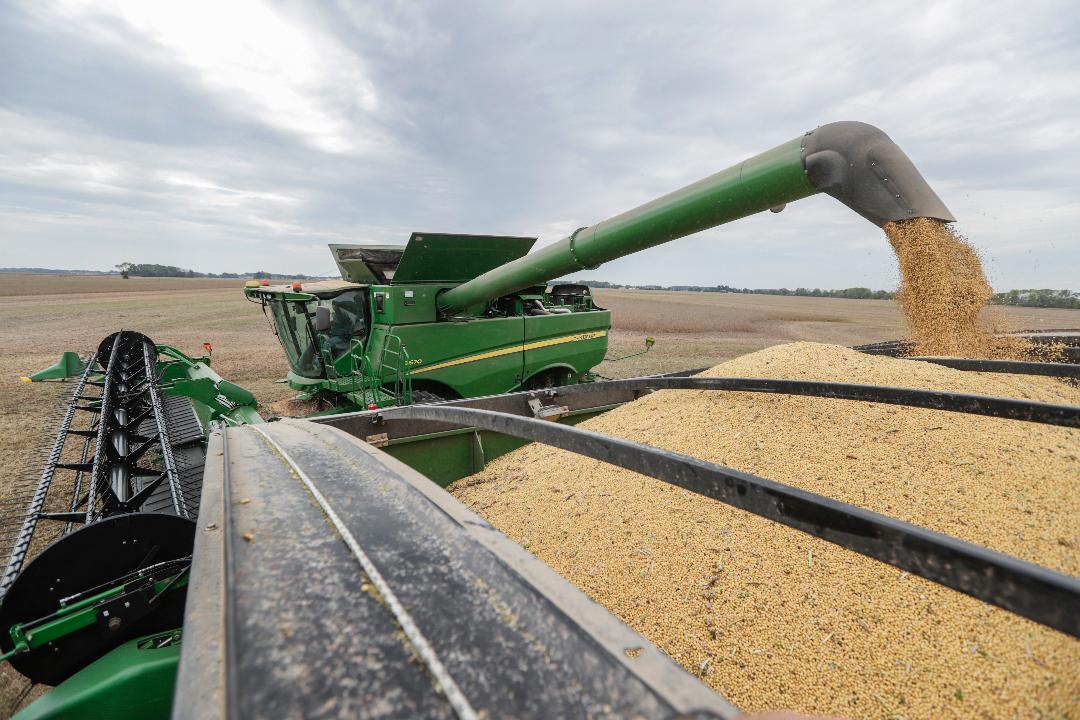Farmers fear China will never return to the US soybean market
It’s late September in the fields of Iowa. The soybean harvest is just beginning, and it’s about 10 percent better than usual. In normal times, Ron Heck would be celebrating. These are not normal times. Heck says his farm and others like it would usually be selling one of every three rows of soybeans in their fields to China. That’s not happening.
“The short-term worry is a significant number of farmers are unable to meet their cash flow needs, Heck tells FOX Business. He says he’s been able to use hedging strategies to limit his losses, but knows some others farmers aren’t as fortunate. He fears they may soon lose their farms, or at least have to refinance their mortgages. Adding to that, Heck says he has heard China may cut back on direct purchases of U.S. soybeans by as much as 75 percent. The question he and other farmers now have to face: Will the Chinese buyers ever return?
A new Iowa State University study says the state of Iowa could lose up to $2.2 billion from trade wars with China and other countries. The study says the loss for soybean growers alone could average $520 million. But then what? China and the United States cut a deal, and everything goes back to normal? Farmers fear it won’t be that simple. They’re starting to imagine a world where China stops buying U.S. soybeans altogether.
Paul Burke has his finger on the pulse of the trade tensions, plugged-in from his office in Beijing. He’s stationed there as the North Asia director for the U.S. Soybean Export Council.
Courtesy: Connell McShane/Ogden, Iowa
“As of the beginning of March, the Chinese are working to not ever have to buy U.S. soybeans until trade disputes are resolved,” says Burke in a telephone interview with FOX Business from Beijing. “They made every effort to purchase every last soybean they can find from Brazil. That allows them to get through November, and maybe December.”
Burke and other observers are just looking at the calendar, and using history as a guide. China turned so heavily to Brazil because poor weather in Argentina damaged the crop in that country. Next year, that will presumably be corrected, giving China more options. The more options it has, the fewer U.S. soybeans it’s likely to buy.
Courtesy: Connell McShane/Ogden, Iowa
The impact is already being felt in price. “If there was no tariff, China would be buying U.S. soybeans at a premium to make up for the short crop in Argentina,” says Burke. “U.S. soybeans are usually the most expensive in the world. Now they’re the cheapest.” To back up Burke’s point, take a look at soybean futures over the last few months. When FOX Business last visited Iowa in June, the price was above $10 per bushel. Since then, it’s down more than 17 percent.
The government has stepped in, trying to cushion the blow. The U.S. Department of Agriculture announced an emergency aid plan that initially gives farmers a $6 billion bailout. Farmers say that money will help them get through the year. Then, the real concerns begin.
The Iowa State study says trade market share is difficult to regain once it’s lost. It points to the Russian grain embargo, put in place by President Jimmy Carter in 1979. Some analysts blame the embargo for the farm crisis of the 1980s. The larger point for modern day farmers: Once a market is gone, you can’t just snap your fingers and bring it back.
China, perhaps sensing the growing anxiety among farmers, paid for a four-page advertising insert in Sunday’s Des Moines Register. The insert was sponsored by state-run China Daily, and highlighted the benefits of trade between the two countries and the recent market losses here in the United States.
On Wednesday, President Trump blasted the Chinese for what he called "propaganda ads"...
Heck, however, is the first to point out China is by no means without blame. “The Chinese government chose to use food as a weapon in a trade war. I’m sure the people in China don’t know they’re paying $200 billion more a year for food than they should be,” Heck says.
China is not transparent about how those costs are being added, but he says soybeans are generally $6 a bushel more expensive in China than in the United States. That’s why he says something needed to be done.
“China is the guilty party here. They’re the one who started the food fight.”
While they may have started it, the worry now is how and when it will end.

